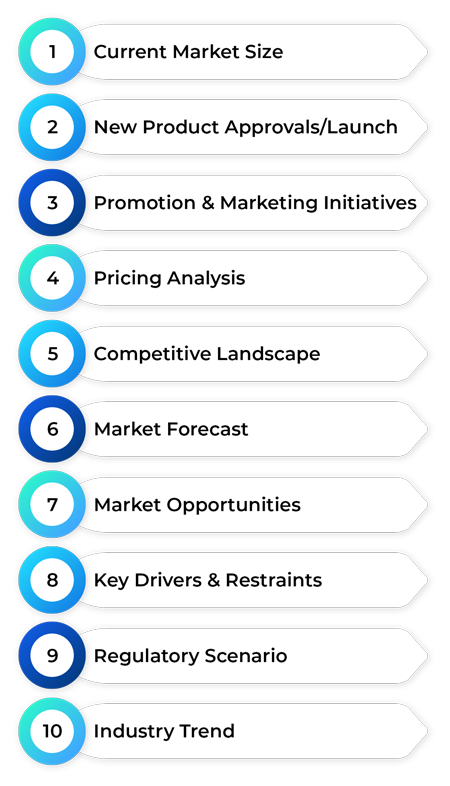 +1 915 229 3004 (U.S.) |
+1 915 229 3004 (U.S.) |  +44 7452 242832 (U.K.)
+44 7452 242832 (U.K.)
 +1 915 229 3004 (U.S.) |
+1 915 229 3004 (U.S.) |  +44 7452 242832 (U.K.)
+44 7452 242832 (U.K.)

The Global Diabetes Supplement Market reached a valuation of USD 13.22 billion in 2021 and is anticipated to grow at a CAGR of 10.31%, reaching USD 31.43 billion by 2030. This market expansion is attributed to the increasing prevalence of diabetes globally, driven by factors such as unhealthy dietary habits, sedentary lifestyles, a growing obese population, and rising instances of related health conditions.
Anti-diabetic supplements play a crucial role in managing blood sugar levels, enhancing cell glucose utilization, boosting energy levels, promoting rejuvenation, improving muscle development, increasing insulin production, and preventing abnormal weight loss. Despite the market's growth prospects, stringent regulations governing diabetes supplement manufacturing may pose challenges.
The global diabetes supplement market is witnessing substantial growth due to increased investments by key players in the field.
Consumer preferences are shifting towards local brands over branded supplements, particularly in regions like India, where safety and efficacy concerns drive the adoption of products from local players such as Himalaya, Dabur, and Patanjali Ayurveda Limited.
The growing adoption of e-commerce channels for supplement purchases is notable, with consumers preferring the convenience of online stores provided by companies like Amway and Herbal Nutrition.
North America: Holds a significant market share, driven by increasing prediabetes and obesity rates. The U.S. dominates the market, with approximately 60% of people using diabetic supplements.
Europe: Expected to be a leading market region due to rising prevalence of prediabetes and diabetes, increased healthcare spending, and growing unhealthy food consumption.
Asia Pacific: Emerges as the fastest-growing market, fueled by the highest population suffering from diabetes. China and India, in particular, witness a surge in diabetes cases, prompting substantial government investments in healthcare.
South America: Experiences an increasing diabetic population, prompting countries like Argentina, Brazil, and Colombia to provide universal health coverage.
Middle East and Africa: Shows emerging growth, with the Middle East benefiting from urbanization, improved healthcare infrastructure, and rising healthcare expenditure.
Supplement Types: Vitamin supplements, herbal supplements, minerals, proteins & amino acids, fibers & specialty carbohydrates, omega fatty acids, artificial sweeteners, and others.
Dosage Form: Tablets dominate the market due to cost-effectiveness and easy packaging.
Distribution Channels: Retail pharmacies lead the market share, while online pharmacies experience significant demand.
Leading companies in the global diabetes supplement market include Caelus Health, Novo Nordisk, Nestlé Health Science, Abbott Laboratories, Danone Nutricia, and others.
Noteworthy developments include the FDA approval of Novo Nordisk's GLP-1 supplement for treating type 2 diabetes and collaborations between Caelus Health, Nestlé Health Science, and Valbiotis for the development and commercialization of innovative diabetes supplements.
Segmentation by supplement types, diabetes type, dosage form, capsules, distribution channels, and regions.
In conclusion, the global diabetes supplement market is poised for significant growth, driven by factors such as the rising prevalence of diabetes, increasing awareness, and advancements in supplement development. Regional variations and market trends underscore the dynamic nature of this industry.
The Global Diabetes Supplement Market reached a valuation of USD 13.22 billion in 2021, reaching USD 31.43 billion by 2030.
The global market is projected to grow at a CAGR of 10.31% during the forecast period, 2023-2030.


Research on the market is done by industry professionals who provide personalized insights on the industry structure, market segmentation, Type assessment, competitive landscape (CL), along with penetration, and emerging trends. In addition to years of professional experience in their various fields and sectors, their analysis is largely based on primary interview (60%) and secondary research (40%) as well as years of professional experience. In addition, our researchers forecast the market's direction over the following seven years by examining past trends and the market's current position. Additionally, various trends of segments and categories that are geographically portrayed are studied and estimated using primary and secondary research.
The key level executives (VP, CEO, Marketing Directors, and Business Development Managers) of the major industry participants who are active and prominent as well as mid-scale businesses operating in this market were interviewed in-depth for this supply-side report by overall Global Market Research.
Extensive primary research was conducted to gain a deeper grasp of the market and industry. Both primary and secondary research, as well as years of pertinent professional experience, are used to support the analysis. By analyzing past and present market patterns, our experts were able to forecast the market's course over the following seven years. For the geographically offered categories in the list of market tables, it differs per category. In connection with the Global Market research report, we also conducted a number of primary interviews with senior level executives (VP, CEO's, Directors, Marketing Directors, Business Development Managers, CFOs, Technical Consultants, Key Opinion Leaders, Industry Experts, Decision Matrix Authorities, and other crucial individuals) of the key industry players who dominated the Global market.
The primary purpose of secondary research was to gather, identify, and validate the information necessary for the thorough, technical, market-focused, and commercial analysis of the global market. With the use of this study, it was also possible to classify and segment the market in accordance with market trends, geographic markets, and regional considerations linked to market type. Analysts have gathered data in the Distribution Channel for the study of the market from reliable sources including annual reports, journals, white papers, corporate presentations, company websites, international organizations of Energy and Power manufacturers, credible paid databases, and many others to gather reliable intel.
Both top-down and bottom-up methodologies were employed to assess the accuracy of the global market size. The market for as a whole was estimated using these methods for a number of different dependent submarkets. Secondary research was used to address the major industry players, and primary and secondary research was used to calculate their market shares in the various regions. This complete intellectual process includes reading the annual and financial reports of the top market participants and conducting in-depth interviews with top industry executives (VP, CEO, Marketing Directors, and Business Development Managers) to gain important industry insights.
Through reliable secondary sources and validated primary sources, the classification of the global markets and their geographic percentage splits were established. To obtain the final qualitative and quantitative data, all relevant variables that might have an impact on the market under investigation have been taken into consideration, inspected in great depth, verified through primary research, and assessed. This information was collected, added to, and thoroughly examined by professional analysts before being provided in this report. The process used to estimate the overall market size for this study is depicted in the following image as an example.


Report Code :
RL65506
Published on :
Upcoming
Request a Free Sample Report